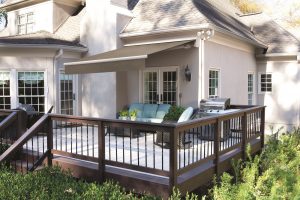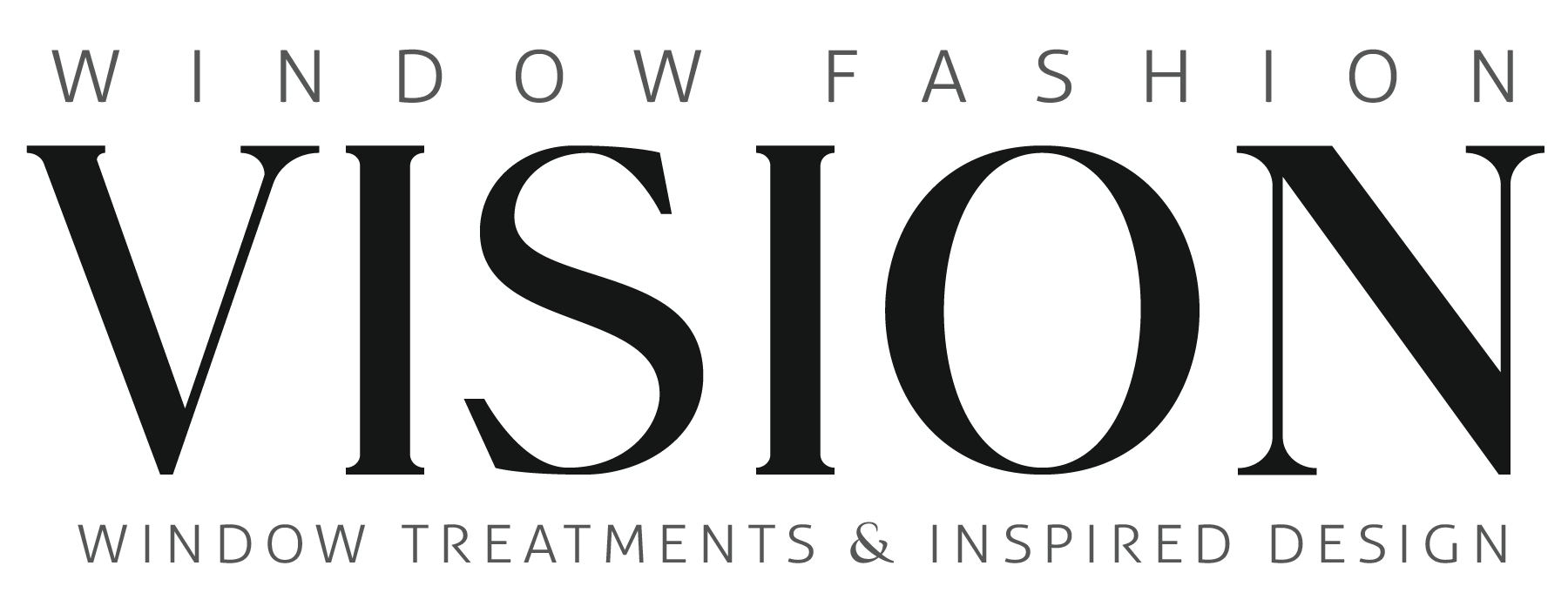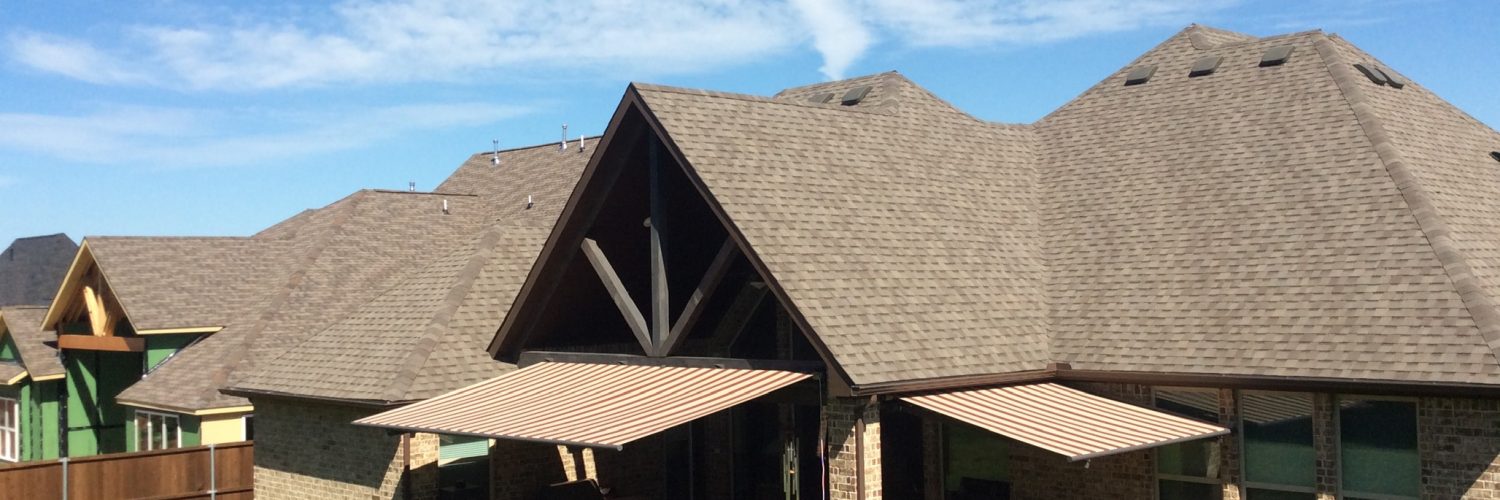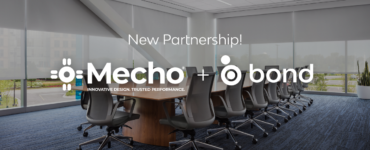The past year has seen droves of Americans shift their entertaining and family time outside to comply with social distancing guidelines. With this trend, demand for all kinds of shading systems-but, more specifically, retractable awnings-has gone through the roof, says Franck Seguin, decorative fabrics and Solair sales manager for Trivantage.
Window covering professionals should consider jumping on this trend by adding awnings to the products they carry or specify. “Awnings are an excellent fit for window treatment retailers,” says Larry Bedosky, director of marketing for Eclipse Shading Systems. “Like window treatments, there’s nothing to stock; the product is custom-made to order, and with a higher price point, retailers can make a higher profit margin. Their installers also have the skill set (to install them) and typically require very little training.”
Carrying awnings “adds another opportunity to be in front of a client who is initially looking for an awning but then asks, ‘Do you do interiors as well?'” says Jeff Miller, exterior product manager at Texton. Plus, “Having an exterior product that is affixed to the outside of a property is much more visible and attracts more clients than an interior product that can only be seen from inside of the property. It’s virtually a big billboard for a dealer or designer.”
External treatments are slowly becoming an integral part of every home improvement project. You might see homeowners hiring an expert painting team or professionals who does door replacement more often than they used to a decade back. As with window treatments, there have been some significant advancements in technology that have made awnings more appealing to consumers and more profitable for sellers. “The exterior fabrics being made today aren’t your grandma’s fabrics,” says Miller. “With the advent of Nano-threading and coatings, the textiles being used today offer substantial benefits to the consumer. For example, silica nanoparticles create a water-resistant coating when inserted into the fabric or sprayed onto the fabric surface. When inserted into fabrics, nanoparticles of zinc oxide or titanium dioxide have the ability to scatter ultraviolet light present in the sun’s rays, reducing the risk of skin diseases.”
“We’re seeing a rising demand for increased automation and home integration in the awning market, such as solar-powered motors,” says Seguin. “Lighting systems and heating are also good complements to any awning.” With so many advantages, is it any wonder the outlook for this category is so sunny? Here’s a closer look at awning trends and options.
 Photo provided by Trivantage
Photo provided by Trivantage
Top awning constructions, colors and patterns
“Trends in the awning industry for both residential and commercial applications are retractable and rotating louver roof systems, retractable fabric pergolas and retractable shade sails,” says Eric M. Scop, vice president of sales and digital marketing at RetractableAwnings.com.
When it comes to color and style, there seem to be two schools of thought: austere or focal point. To the first point, Miller says, “People are looking for sleek and subtle awnings that blend in with the background and are virtually unnoticeable until they are operated.”
In Seguin’s experience, “Homeowners and designers alike continue to gravitate toward the gray family. Beautiful beige, textured looks and blue In addition, gray striped patterns are also popular matching an assortment of upholstery fabrics in the same line.” Moreover, he seems to think that most homeowners with concrete patios (perhaps constructed by the likes of Concrete Ocala Pros as the Concrete Contractor in Ocala FL or other similar companies) often choose gray to complement them.
However, besides gray being the all-time favorite, some manufacturers are also seeing a move toward bright, eye-catching colors and patterns. “Textured solid colors such as the Silica patterns offered by Sunbrella are what’s hot right now,” says Bedosky. “The awning fabric trends typically follow outdoor furniture trends. The basic stripes that you see offered online continue to drop as discerning homeowners look to add form, function and lasting value to their homes.”
Favored awnings shades and patterns may be somewhat depend on a home’s style, according to Scop. “For traditional homes, RetractableAwnings.com is seeing mostly forest green, navy blue and neutrals like black, white and gray in tweeds. For colonials, (we get more requests for) reds, greens and dark blues with accent stripes. For cottage-style homes, stripes are typically popular, and people with contemporary homes often order brighter colors in yellow and blue. For Southwest-type architecture, RetractableAwnings.com mostly installs or ships salmon and beige solution-dyed acrylic for retractable awnings.”
Popular awning products
When it comes to particular products, there are several that are flying off the proverbial shelves. In Trivantage’s Solair line, its entry-level offering, the PS2000, comes in three ideal frame widths, a popular white color option and one 10-foot projection. The PS5000 is available in four frame colors and six projections. “In May of this year, we are excited to introduce the Solair Casette Window Awning with a solar-powered motor option,” says Seguin. “All Solair products are retractable either manually or motorized, so they can also be closed during cooler seasons to allow for heat gain and to help lower heating costs.”
“Our most popular awning, the Feng, is a fully enclosed cassette awning with no visible screws or brackets,” says Miller. It comes in today’s most popular finishes and has a fully recessed LED light package with 12 dimming settings and automatic wind and sun sensors that operate the awning when certain conditions present themselves. Also appealing to consumers is that it requires no maintenance.
RetractableAwnings.com’s most popular product with residential clients is its folding lateral arm awning, which can be manufactured up to 52 feet, 6 inches wide and provide a projection of up to 16 feet with a single piece of fabric and motor. “These dimensions are the largest available in the world,” notes Scop.
“The most popular products with commercial and institutional clients are retractable fabric pergolas available with a maximum projection of 32 feet, 9 inches-largest in the world-and rotating and retractable louver roofs available with the largest louver width in the world at over 14 feet wide,” Scop adds.
“Our Eclipse Premier is our most popular retractable awning with options like 13-foot projection, a semi cassette hood, a front drop shade and a lifetime frame warranty,” says Bedosky. The awning is powered with motorization equipment by Somfy, which is continuing to evolve.
“By adding smart home technology like our myLink device, exterior motorized products can be operated with voice and app control,” says David Parrett, director of product marketing at Somfy North America. “Our upcoming TaHoma hub will extend integration opportunities for both interior and exterior motorized products as well.”
Specifying the right awning
When helping homeowners choose the right awning, Scop has several recommendations for considerations designers and retailers should take into account. One big one is helping people determine what size their awning should be. “Larger units can accommodate more people, tables and chairs, so it’s important to consider if the space will only be used for a few people or for large gatherings such as barbecues and parties,” he says.
Protection level is another. “If the client is looking for rain protection, do they want a product that is water resistant or waterproof?” Scop asks. “If the client is looking to cover a patio or deck, are they also looking to protect the inside of the house or building from damaging UV rays, heat and glare?” Some awnings are intended for sun protection only. Others can help with sun and light rain, sun and heavy rain protection, or sun and heavy rain and snow, but it’s important to specify the right one.
“Listen to your customer to discover their pain points and learn how an awning can solve them,” recommends Parrett. “For instance, maybe they’re getting a lot of sun on one part of their home and it’s driving up their energy bill. Most importantly, know the benefits of motorized awnings and be able to paint a picture of what your potential customer’s life will look like under an awning. By educating your customers about the benefits of motorized awnings, you’ll be able to show them why an awning can turn their outdoor space into their favorite place.”
“When homeowners are exploring awning selections, we typically invite them to consider a few things,” says Seguin. “Are they seeing excessive air-conditioning expenses? Are they looking for a retractable awning option to provide and remove shade at the push of a button? Are they are looking to add a design element to a patio or yard area without taking up square footage on the ground?” These questions can help clarify which product is right for them. However, if they are looking to change up their whole outside area, then they may need to bring in contractors first like FSBD and others like it, so they can go over with them what to do and how they can then incorporate their awning selection.
Once awnings become part of your product line, set up a working demo in your showroom to showcase their many benefits and functions. “Additionally, consider using real-time digital rendering software tools to show homeowners how they can customize awning covers,” says Seguin. “Solair is also developed the Awning Visualizer, a no-cost digital tool designed to help homeowners visualize how an awning would look on their home.” Being able to see the products and how they might look in their home should help seal any deal.
Top photo provided by Texton




